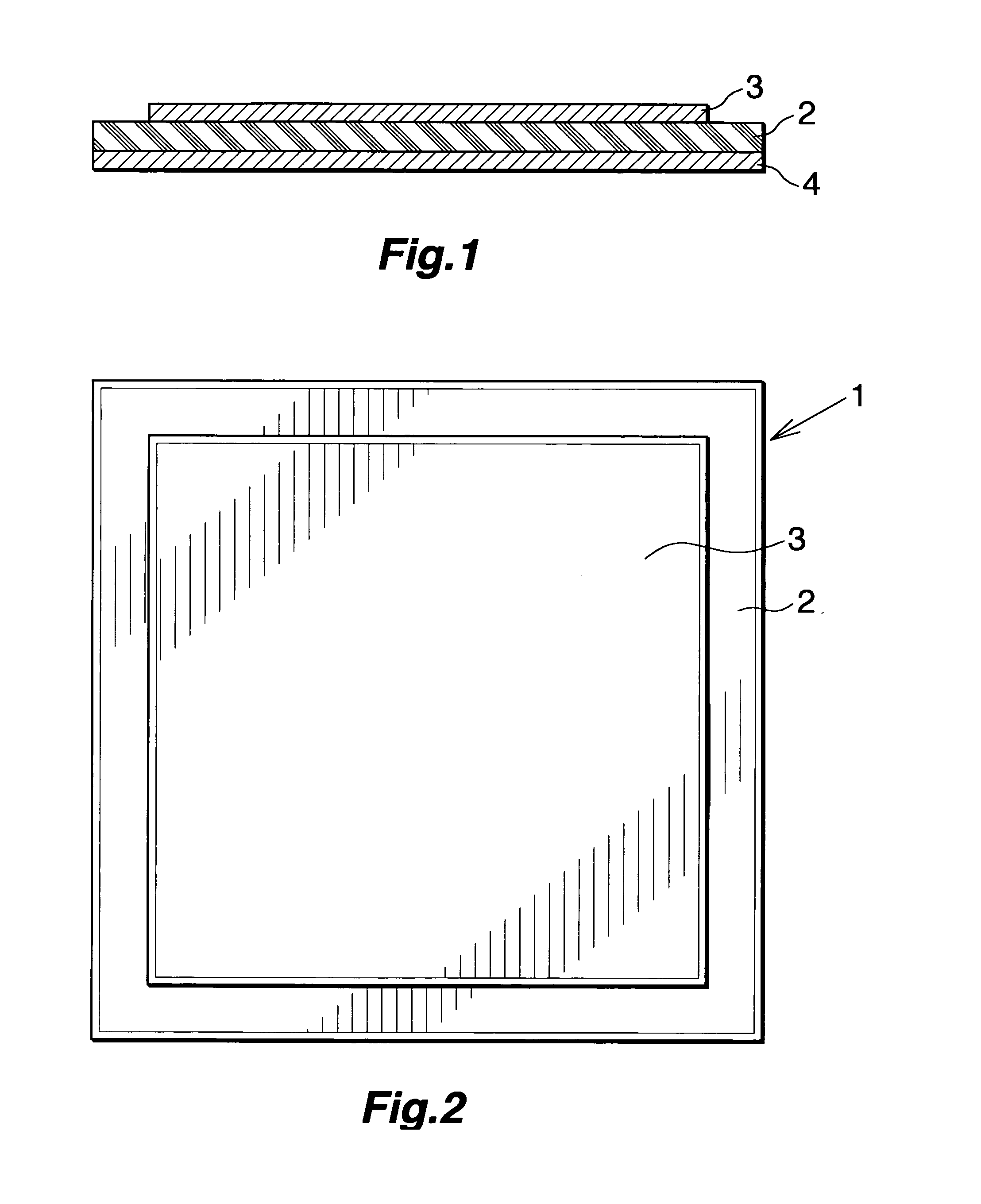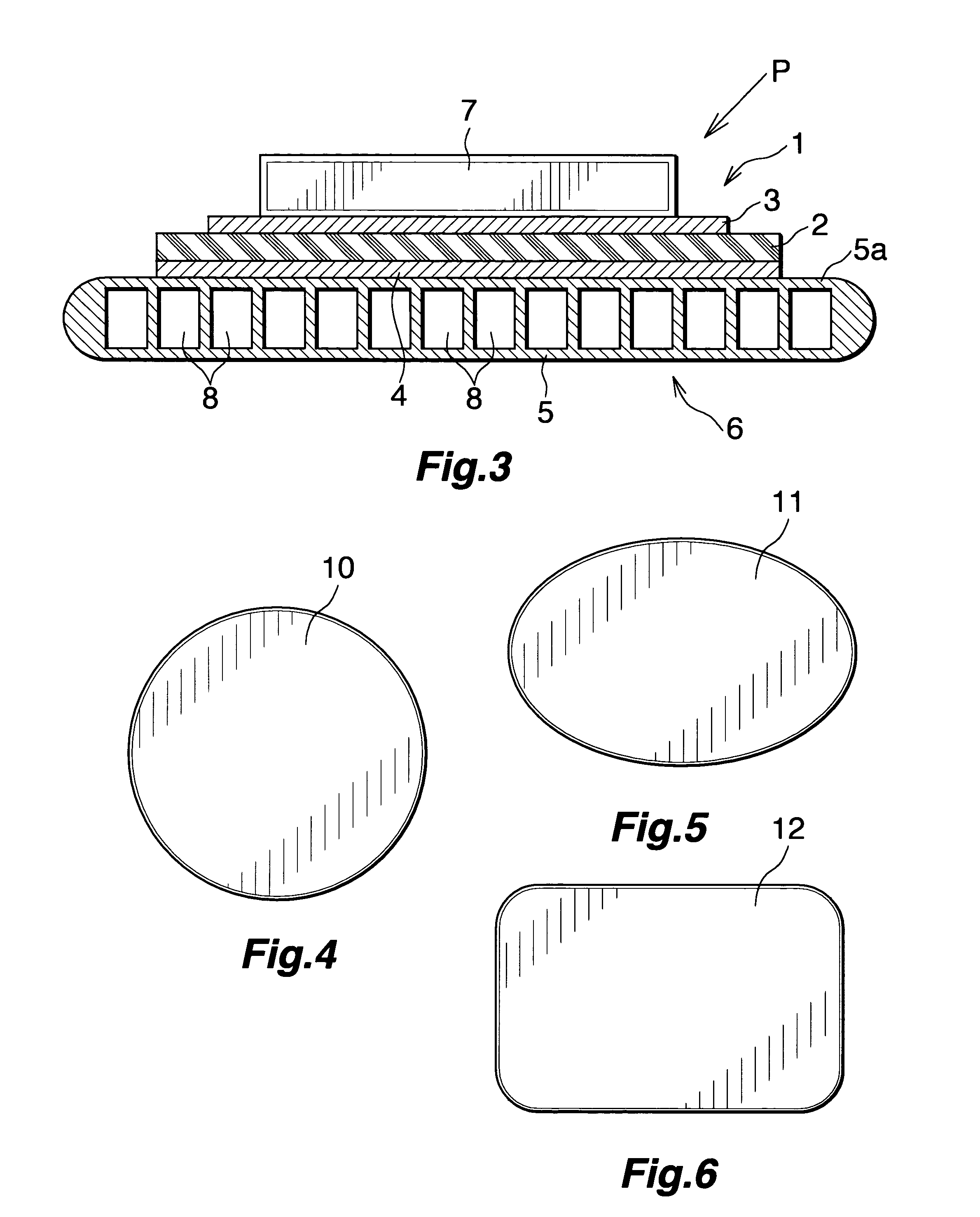Insulating substrate and method for producing the same
a technology of insulating substrate and substrate, which is applied in the direction of clayware, manufacturing tools, and semiconductor/solid-state device details, etc., can solve the problems of reducing heat radiation performance, affecting durability, and failure to exhibit sufficient heat radiation performance, so as to enhance heat radiation performance, excellent thermal conductivity, and excellent electrical conductivity
- Summary
- Abstract
- Description
- Claims
- Application Information
AI Technical Summary
Benefits of technology
Problems solved by technology
Method used
Image
Examples
example 1
[0057]An AlN powder having an average particle size of 6 μm and produced by an ordinary production method was placed in a die of graphite. A pair of electrodes was disposed in such a manner as to face the interior of the die. Subsequently, in a state in which a uniaxial pressure of 50 MPa was imposed on the AlN powder, spark plasma sintering was performed through application of a pulse current of 2,000 A maximum between the paired electrodes and through retention at a sintering temperature for five minutes, thereby forming the electrically insulative layer (2) having a square shape with 50 mm on sides and a thickness of 0.635 mm. In the above-mentioned spark plasma sintering, sintering temperature for the AlN powder was 1,800° C.
[0058]An Al powder having an average particle size of 100 μm was produced through gas atomizing. The gas-atomized Al powder having an average particle size of 100 μm and an SiC powder having an average particle size of 10 μm produced by an ordinary productio...
example 2
[0061]An AlN powder having an average particle size of 6 μm and produced by an ordinary production method was placed in a die of graphite. A pair of electrodes was disposed in such a manner as to face the interior of the die. Subsequently, in a state in which a uniaxial pressure of 50 MPa was imposed on the AlN powder, spark plasma sintering was performed through application of a pulse current of 1,000 A maximum between the paired electrodes and through retention at a sintering temperature for five minutes, thereby forming the electrically insulative layer (2) having a square shape with 12 mm on sides and a thickness of 0.635 mm. In the above-mentioned spark plasma sintering, sintering temperature for the AlN powder was 1,800° C.
[0062]An Al powder having an average particle size of 100 μm was produced through gas atomizing. The gas-atomized Al powder having an average particle size of 100 μm and an SiC powder having an average particle size of 10 μm produced by an ordinary productio...
PUM
| Property | Measurement | Unit |
|---|---|---|
| temperature | aaaaa | aaaaa |
| pressure | aaaaa | aaaaa |
| temperature | aaaaa | aaaaa |
Abstract
Description
Claims
Application Information
 Login to View More
Login to View More - R&D
- Intellectual Property
- Life Sciences
- Materials
- Tech Scout
- Unparalleled Data Quality
- Higher Quality Content
- 60% Fewer Hallucinations
Browse by: Latest US Patents, China's latest patents, Technical Efficacy Thesaurus, Application Domain, Technology Topic, Popular Technical Reports.
© 2025 PatSnap. All rights reserved.Legal|Privacy policy|Modern Slavery Act Transparency Statement|Sitemap|About US| Contact US: help@patsnap.com



